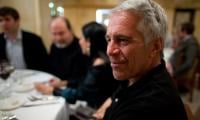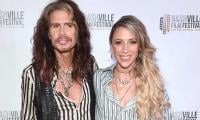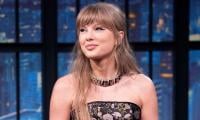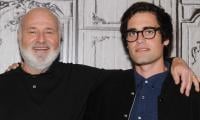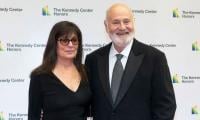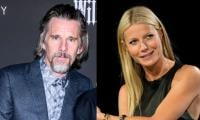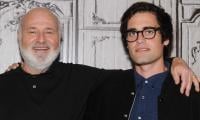NEW DELHI: To many in the eastern Delhi neighborhood where a convulsion of religious violence erupted this week, it all began with one man.
Kapil Mishra, a local politician with India’s leading Hindu nationalist party, had just lost an election. Acquaintances in the area, which now feels like a war zone, said he had been looking for a way to bounce back, foreign media reported, The New York Time reported.
Mishra, 39, is known for his outspoken views and flexible politics. As an upper-caste Hindu from a political family, he had worked for Amnesty International and Greenpeace, and risen in the ranks of one of India’s most progressive political organisations. But several years ago he shifted allegiance across the political spectrum to the Bharatiya Janata Party, India’s current governing party, which has deep roots in Hindu supremacist ideology.
On Sunday, he appeared at a rally against a group of protesters at Shaheen Bagh (most of them women) in the Indian capital who were objecting to a new citizenship law widely seen as discriminatory toward Muslims. There he vented his anger in a fiery speech in which he issued an ultimatum to the police: either clear out the demonstrators, who were blocking a main road, or he and his followers would do it themselves.
Within hours, the worst Hindu-Muslim violence in India in years was exploding. Gangs of Hindus and Muslims fought each other with swords and bats, shops burst into flames, chunks of bricks sailed through the air, and mobs rained blows on cornered men.
Many Indians, including Hindus, believe that Mr. Mishra and his Hindu nationalist supporters have weaponized a very dangerous mood. In a Hindu majority nation, with a Hindu nationalist government that has allowed the killers of Muslims to go unpunished, fear has been growing that violent Hindu extremism could spin out of control.
“Kapil Mishra should be in jail,” said Rupesh Bathla, a businessman who says he has known Mr. Mishra since they were teenagers. “He started communal riots. He planted hatred in other people’s hearts.”
By Wednesday, at least 25 people had died, hospital officials said, most from gunshot wounds. Several witnesses said that the live fire came from the direction of the police officers, and the dead included Hindus as well as Muslims.
Though property belonging to Hindus was burned, the destruction was much heavier on the Muslim side. In Muslim areas, shop after shop was destroyed and entire markets were burned down. Dozens of Muslim residents have accused police officers of standing passively by while the destruction was underway.
On Wednesday, the few people out on the streets walked quietly past the blackened car hulks and smashed homes. The whiff of charred materials still hung in the air, in what some scholars said was an eerie echo of previous religious bloodletting in India.
“On the whole, the Delhi riots of this week are now beginning to look like a pogrom, à la Gujarat 2002 and Delhi 1984,” said Ashutosh Varshney, the director of the Center for Contemporary South Asia at Brown University.
While the death toll is nowhere near that of those earlier bouts, the episodes shared a disturbing similarity, Mr. Varshney said, with “mobs unleashing savage violence while the cops look away, or join the mob, instead of neutrally intervening to crush the riot.”
With the violence cooling down for the moment, Prime Minister Narendra Modi, who hosted President Trump as the fighting raged, broke his silence on Wednesday after Mr. Trump had departed, urging people in a Twitter post to “maintain peace and brotherhood at all times.” He added, “Peace and harmony are central to our ethos.”
As night fell on Wednesday, a few sporadic attacks were reported, but no large-scale mayhem. The police, armed now with assault rifles, had been reinforced with paramilitary troops.
In the area that suffered the worst in the fighting, many residents laid blame on Mr. Mishra, who declined a request for an interview. But in a Twitter post, he said, “It’s not a crime to ask for blocked roads to be opened. It’s not a crime to tell the truth. I don’t fear this massive hate campaign against me.”
Mr. Mishra had said in his speech that he did not want to create trouble before Mr. Trump left the country on Tuesday night. But as Sunday evening approached, gangs of Hindu and Muslim men began throwing rocks at one another, and that quickly spawned far greater violence.
At a court hearing on the riots on Wednesday, a judge pressed police officials about why they had not watched videos of Mr. Mishra’s incendiary speech — an indication, the judge implied, that they had not seriously investigated the sources of the violence.
“This is really concerning,” said the judge, S. Muralidhar, according to LiveLaw, a legal news website. “There are so many TVs in your office, how can a police officer say that he hasn’t watched the videos? I’m really appalled by the state of affairs of the Delhi Police.”
Mr. Mishra’s supporters said the majority of people in the community had backed his effort to evict the protesters. “How could our kids get to school with those protesters blocking the road?” said Alok Kumar Gupta, a retired military officer who lives near the protest area. “Kapil Mishra was only trying to help.”
But others wonder if Mr. Mishra was trying to make a name for himself in Hindu nationalist circles. He had been elected to the local assembly in Delhi in 2015 from the progressive Aam Aadmi Party, but eventually fell out with his colleagues and defected to Mr. Modi’s Bharatiya Janata Party, or B.J.P.
He then started espousing Hindu nationalist views and vilifying Muslims, more out of political expediency than true belief, argued Mr. Bathla, who claims to have known Mr. Mishra for 30 years.
“When he was younger he wasn’t like that,” he said. “He was chill.”
Just a few weeks before the Feb. 8 local assembly elections, Mishra posted what was widely viewed as an incendiary Twitter message, framing the contest as “India vs Pakistan.” After he lost the race, several people said he took the hard line against the mostly Muslim protesters as a way to improve his standing in the B.J.P.
Mr. Modi and his state government were accused of quietly ordering the police to stand by as the violence raged. He has denied those accusations, and in 2012, an investigative panel for the Supreme Court found no evidence to support them.
But until he became prime minister in 2014, Modi was banned from entering the United States. And since he came to power, violence against Muslims, including mob lynchings, has increased sharply.
Muslim families in northeast Delhi are now abandoning their homes. Several said in interviews that they no longer felt safe.
Asgar Ali, whose grocery shop was burned to the ground on Tuesday, said there was no difference between police officers and Hindu mobs. He said he was fleeing his home, where he had lived for 20 years, knowing that he might never return.
“I built this house with my blood and sweat,” Mr. Ali said. “Now, I have been reduced to a homeless pauper. I have lost everything.”
